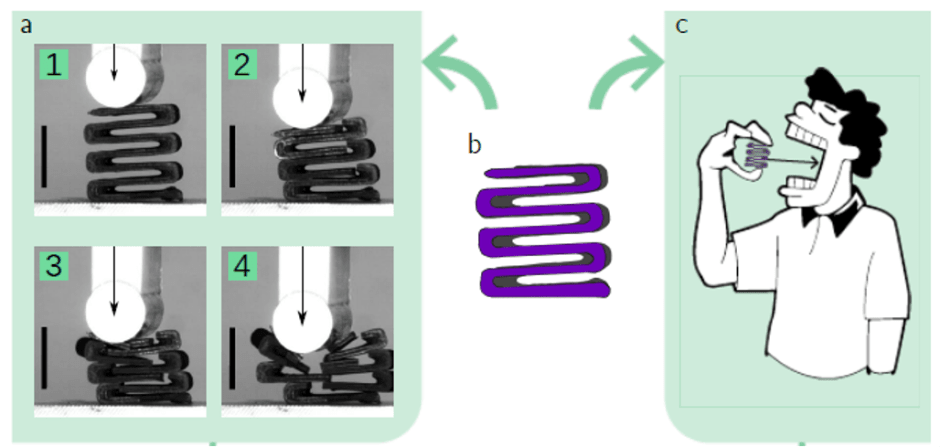
The tastiest chocolate comes from a 3D printer at the UvA
It is not just the taste of chocolate but also its structure and the sound when we bite into it that determines whether we like it or not. The more brittle, the better, concluded UvA physicists Corentin Coulais and Jackson Wilt, in collaboration with Delft University of Technology and Unilever. They published the results in the professional journal Soft Matter.
In a lab at the Science Park, researcher Jackson Wilt warms up chocolate drops and runs a script in the 3D printer. On a refrigerated plate, the device prints S-shaped chocolates that are one centimetre high. A little later, figures with twice as many windings follow, and finally, a spiral structure emerges.
Thrrr
The more windings in the chocolate, the more it breaks when you bite into it. And people like crunchy food. A panel of 10 test subjects confirmed that the more often the chocolate broke, the better the experience. The sound of breaking also contributed to the experience. Corentin Coulais: "And if you pay attention, you can feel and hear the 'thrrr' of the biting. That also contributes to the eating experience."
In the UK, there is already chocolate with air in it. The Bros brand has been selling chocolate bars with air holes for decades. But never before has it been scientifically researched which geometric design of chocolate makes it tastiest.

The more brittle, the better
Finally, the researchers wanted to know whether they could also predict the feel of the chocolate in the mouth. For this purpose, they chose a mathematical mode that optimised the shape of the chocolate. The researchers have not yet investigated what the ideal number of breaks would be. For the time being, they think, the more fragile the better.
The researchers also noticed that when the chocolate was soft, you had to bite down more before it broke. That's not what you expect with thin chocolate, which often breaks right away. Coulais says: "My hypothesis is that an unexpected tasting experience is also interesting. It's not just the crunchiness, but also the unexpected that makes it tasty.”
(continue reading below the image)

Geometric design
Crispy chocolate is a metamaterial. Metamaterials are materials with special properties that do not occur in nature. These properties are not created by changing their chemical composition, but by geometric design. Metamaterials are already being actively researched for aircraft and prostheses, but not yet in the food industry.
Metamaterials could also help to improve taste in meat substitutes. Cooperation partner Unilever is also interested in this and in other possible applications. Coulais says: "It is also economically advantageous to sell a large piece of chocolate, half of which consists of air."
Metamaterials can also be used to treat eating disorders or used for the elderly who have trouble chewing. There is also a great demand for personalised snacks in the army. This could benefit morale, the researchers believe. Coulais says: "It could also be useful in space stations. Besides having fun in the lab, and getting fat," Wilt adds, laughing.
The researchers are now keen to collaborate with TNO Food, who are developing 3D printers for personalised food in Eindhoven.

